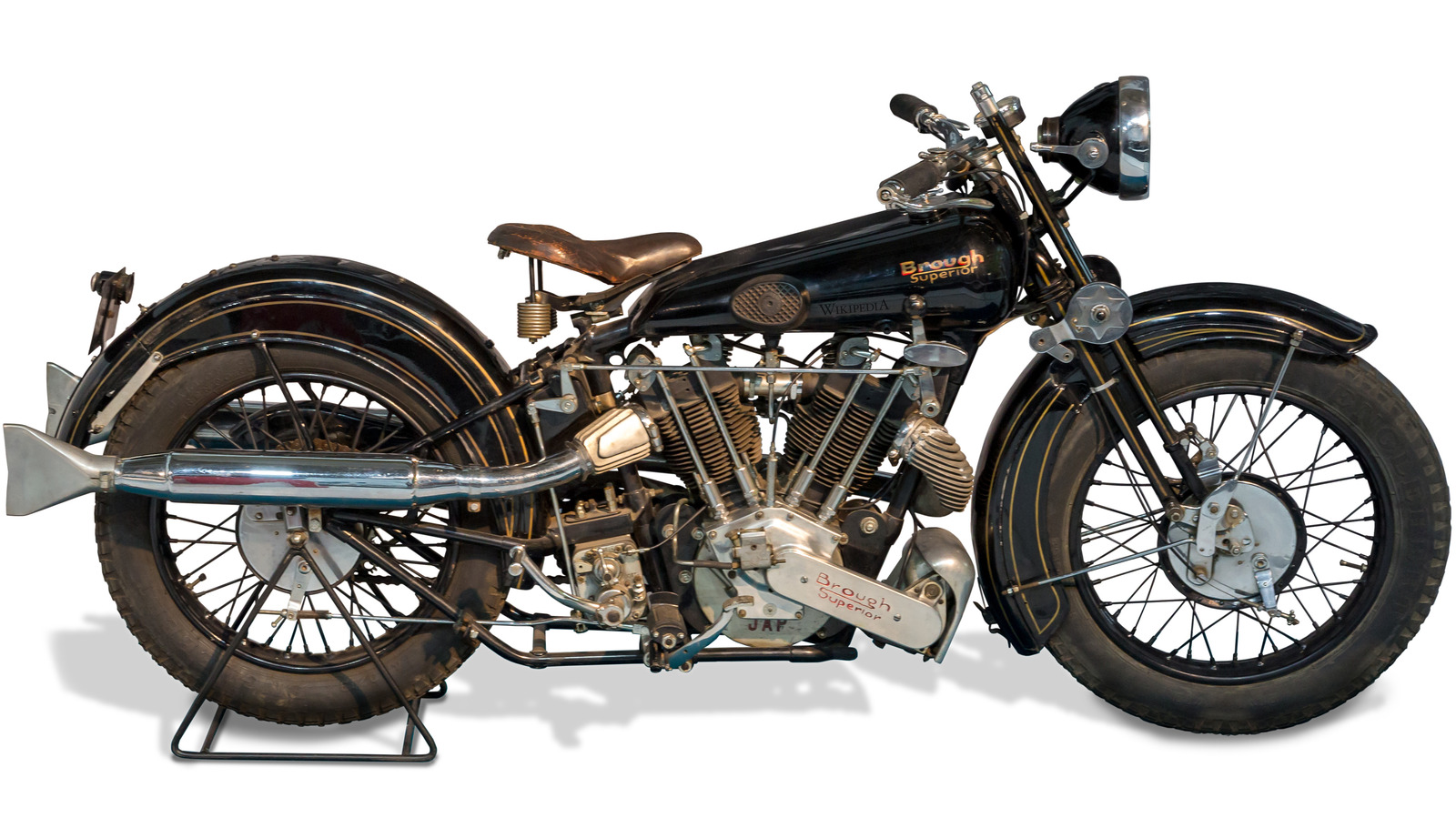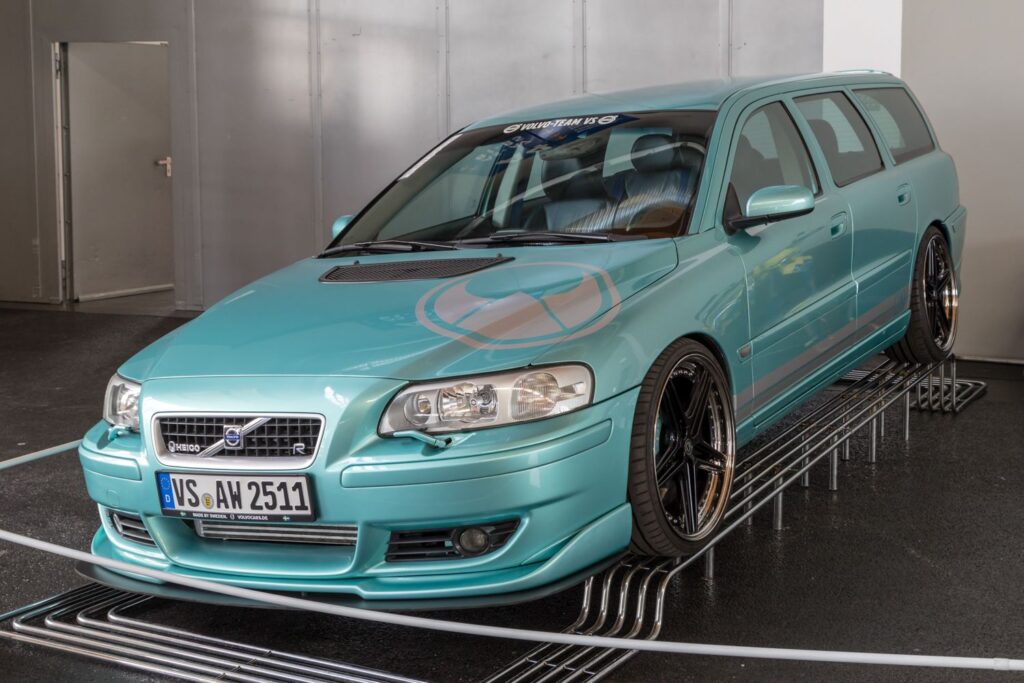
You’ve worked hard. You’ve saved every penny. You finally found it – that perfect car, the one that promises freedom, reliability, and that undeniable new car smell. The gleam of the paint, the hum of the engine, the dream of countless trouble-free miles stretching ahead… pure automotive bliss, right? But what if that dream, that joy, that significant financial investment, crumbles into a relentless nightmare in just one short year?
Today, we’re pulling back the curtain on a harsh reality of the automotive world. We’re not talking about isolated incidents or a single bad lemon. We’re talking about consistent, widespread patterns of disappointment that lead to profound buyer’s remorse. Considering how much new and used cars go for these days, you need to know what you’re getting into. Making a buying decision based only on the exterior aesthetics and specs might get you into trouble. Learning from other vehicle owners’ mistakes is one way to make better choices.
Our insights are meticulously gathered from vast datasets: rigorous Consumer Reports, the raw, honest feedback of thousands of real owners, and official industry recalls that reveal systemic flaws. This isn’t just hearsay; this is data-driven, cold, hard truth. Nearly 4 in 10 Americans who have bought a car have regrets about their purchase, with the most common regret being choosing a different make or model. If you’re even thinking about buying a new or used car soon, you absolutely, positively need to watch this before you make a costly mistake. Let’s expose some of the vehicles that leave owners wishing they’d never signed on the dotted line!
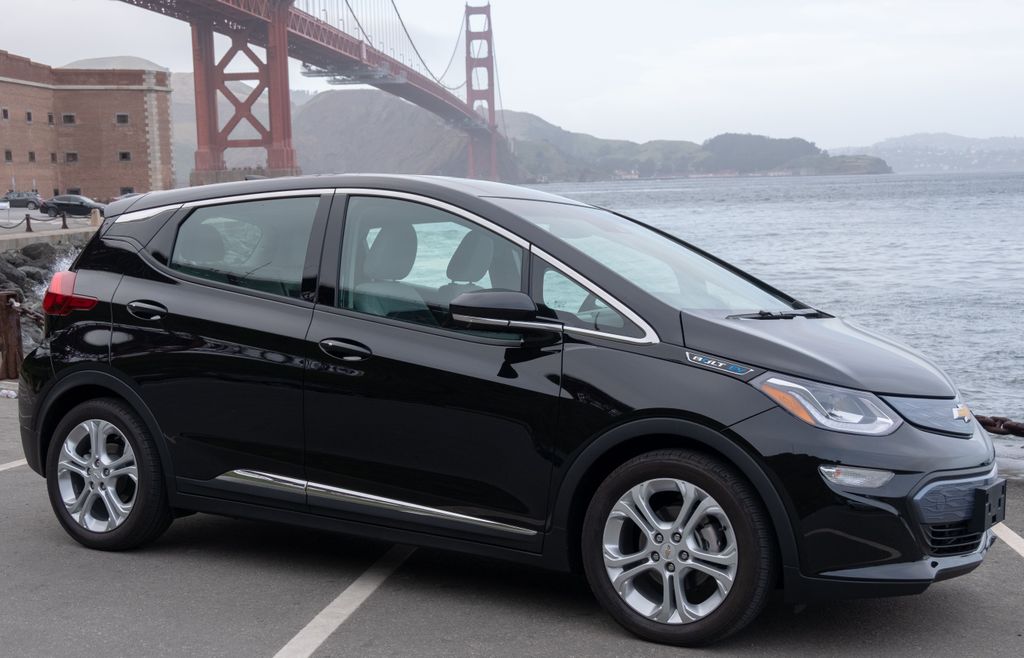
1. **Chevrolet Bolt**General Motors’ Chevrolet Bolt initially garnered praise for two key attributes that resonate deeply with electric vehicle buyers: its affordability and a respectable range. For many, it represented an accessible entry point into the burgeoning EV market, promising a future of lower running costs and reduced emissions. However, beneath this veneer of initial appeal, the Bolt has been plagued with a series of significant and often alarming problems that have severely impacted owner satisfaction.
At the forefront of these issues are the infamous battery-related fires that led to massive recalls in both 2020 and 2021. This was not a minor glitch; it was a systemic problem stemming from lithium-ion batteries manufactured by LG. These batteries were found to be susceptible to short-circuiting, overheating, and, catastrophically, igniting into flames. For owners, this presented not only a profound safety concern but also immense logistical headaches and a complete erosion of trust in their vehicle.
The repercussions of these battery defects extended far beyond the immediate fire risk. The widespread recalls required owners to bring their vehicles in for extensive repairs, often involving battery pack replacements, which led to significant inconvenience and uncertainty. The financial implications for General Motors were substantial, but for owners, the experience was one of frustration, anxiety, and a feeling of being left with a potentially dangerous and unreliable vehicle.
Beyond the critical battery problems, the Chevrolet Bolt’s overall driving dynamics and passenger comfort also failed to impress. Owners frequently report that the ride quality is merely “so-so,” lacking the refinement and smoothness expected even from a compact EV. Furthermore, the space available for rear passengers is often described as inadequate, making longer journeys uncomfortable for anyone but the driver and front passenger. The handling, while functional, does not offer any particular highlights, contributing to an overall driving experience that many find underwhelming and uninspiring, especially when weighed against the vehicle’s significant safety concerns.
Car Model Information: 2023 Chevrolet Bolt EUV LT
Name: Chevrolet Bolt EV
Caption: 2022 Chevrolet Bolt EV
Manufacturer: General Motors
Production: unbulleted list
ModelYears: unbulleted list
Class: Subcompact car
BodyStyle: hatchback
Layout: Front-engine, front-wheel-drive layout
Predecessor: Chevrolet Spark EV
Categories: 2020s cars, All Wikipedia articles in need of updating, All articles containing potentially dated statements, All articles with unsourced statements, Articles containing potentially dated statements from February 2018
Summary: The Chevrolet Bolt EV (marketed in Europe as Opel Ampera-e) is a battery electric subcompact hatchback manufactured and marketed by General Motors under its Chevrolet brand from late 2016 until late 2023, with a brief hiatus between mid-2021 and early 2022.
The first-generation Bolt was developed and manufactured with LG Corporation. Sales of the 2017 Bolt began in California in December 2016; it was released nationwide and international markets release in 2017. A rebadged European variant was marketed as the Opel Ampera-e in mainland Europe. In 2017, the Bolt was the second-best-selling plug-in car in the United States. It was named the 2017 Motor Trend Car of the Year, the 2017 North American Car of the Year, an Automobile magazine 2017 All Star, and was listed in Time magazine’s Best 25 Inventions of 2016. The Ampera-e was discontinued after 2018. By the end of 2020, GM had sold 112,000 Bolt and Ampera-e cars worldwide. The first-generation Bolt had been subject to at least three recalls due to battery fire risks.
In mid-2023, GM officials said they would discontinue the Bolt; after outcry, they announced plans for a next-generation model, which is expected to be revealed in 2025 for model year 2026.
Get more information about: Chevrolet Bolt
Buying a high-performing used car >>>
Brand: Chevrolet Model: Bolt
Price: $24,998 Mileage: 40,868 mi.
Read more about: Pure Automotive Gold: 14 Masterpiece Cars from the 1960s That Still Reign Supreme
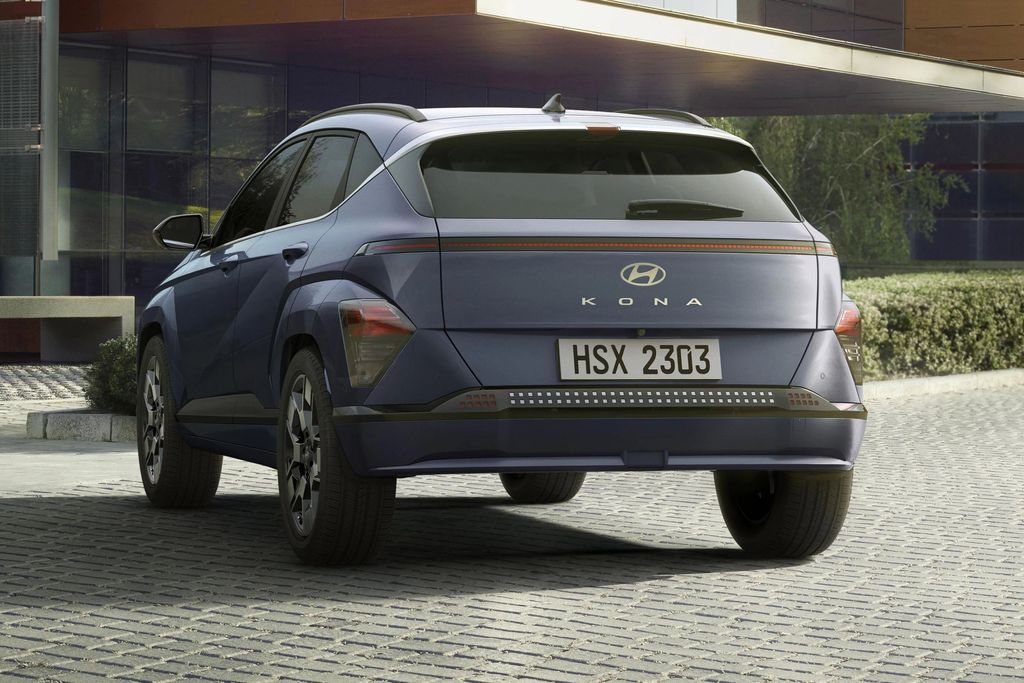
2. **Hyundai Kona Electric**Hyundai has, in recent years, earned considerable recognition for its innovative and well-received electric vehicles, pushing the boundaries of design and technology in the EV segment. However, even successful manufacturers can produce models that fall short of expectations, and for Hyundai, the Kona Electric stands out as a regrettable example for many owners. Despite its initial promise, this particular EV has accumulated a history fraught with serious issues that have tarnished its image.
Much like its Chevrolet counterpart, the Hyundai Kona Electric has been unfortunately associated with battery fires and extensive recalls. The carmaker was compelled to issue a worldwide recall in both 2020 and 2021 to proactively address these fire risks. The solution involved replacing battery packs in affected electric vehicles, a costly and complex undertaking designed to nip the safety concerns in the bud. For owners, these recalls meant not only inconvenience but also a pervasive sense of unease regarding the reliability and safety of their daily driver.
The recurring theme of battery-related issues with electric vehicles, including the Kona Electric, highlights a critical challenge in the rapid evolution of EV technology. While the industry strives for efficiency and performance, these incidents underscore the profound importance of battery integrity and safety. For consumers, the fear of their vehicle spontaneously igniting is a significant deterrent, overriding many of the environmental and economic benefits that initially attracted them to electric ownership.
Unfortunately, the battery issues in the Hyundai Kona Electric are widely regarded as just “the tip of the iceberg.” Many buyers have discovered that the vehicle’s problems extend far beyond its power source, encompassing various other components and aspects of the ownership experience. This broader spectrum of complaints suggests that while the battery recalls addressed a critical safety flaw, they did not resolve all the underlying reasons for owner dissatisfaction, leaving many with a case of buyer’s remorse that runs deep.
Car Model Information: 2024 Honda Civic Sport
Name: Hyundai Kona
Caption: Hyundai Kona N Line (SX2)
Manufacturer: Hyundai Motor Company
Aka: Hyundai Kauai (Portugal)
Production: 2017–present
ModelYears: 2018–present
Class: Subcompact crossover SUV
BodyStyle: SUV
Layout: ubl
Categories: 2020s cars, All-wheel-drive vehicles, All Wikipedia articles in need of updating, Articles containing Chinese-language text, Articles containing Korean-language text
Summary: The Hyundai Kona (Korean: 현대 코나) is a subcompact crossover SUV produced by the South Korean manufacturer Hyundai. The first-generation Kona debuted in June 2017 and the production version was revealed later that year. It is positioned between the Venue or Bayon and the Tucson in Hyundai crossover SUV line-up. The battery electric version called the Kona Electric (or Kona EV) was first launched in South Korea during the first half of 2018 and rolled out gradually worldwide afterwards.
Get more information about: Hyundai Kona
Buying a high-performing used car >>>
Brand: Hyundai Model: Kona Electric
Price: $25,950 Mileage: 29,727 mi.
Read more about: Beyond the Showroom Shine: 11 Popular Cars Their Owners Deeply Regret Buying
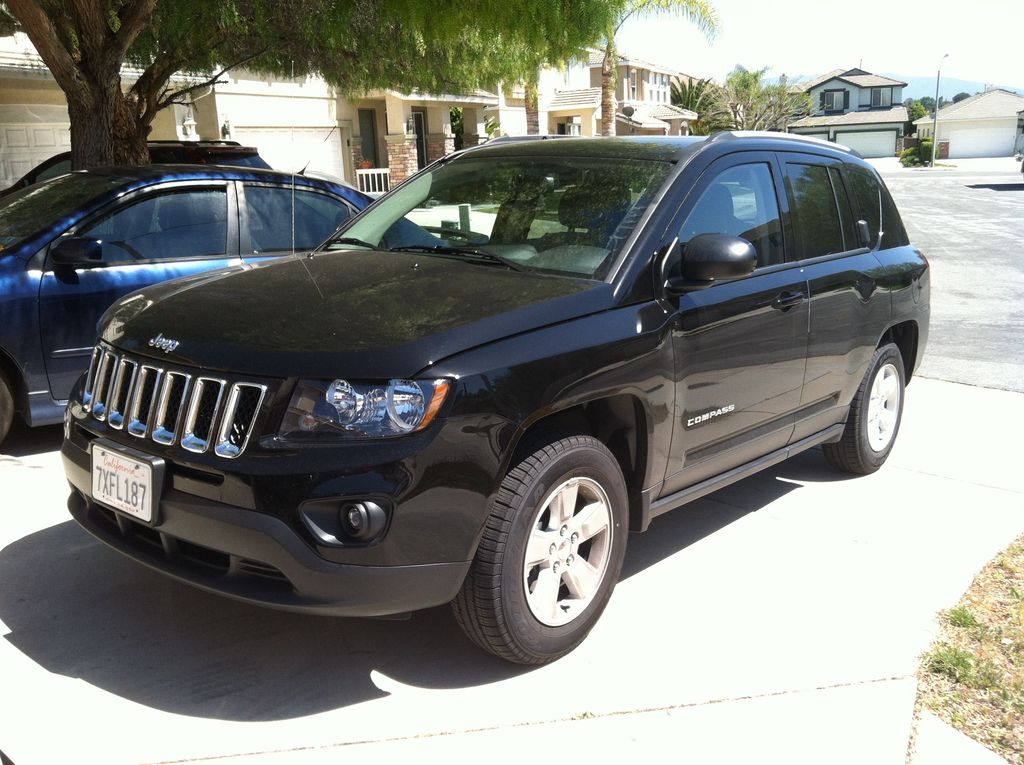
3. **Jeep Compass**For many buyers, the allure of a Jeep lies in its rugged image and the promise of off-road capability, even in a compact SUV package. The Jeep Compass, designed to deliver on this promise, has instead become a notable source of regret for many owners across various model years. This vehicle is frequently cited as one to steer clear of if you want to avoid a metaphorical “migraine headache on wheels,” primarily due to a litany of mechanical and electrical problems that undermine its reliability and practical utility.
The transmission is a particularly common and frustrating pain point for Compass owners. Both the continuously variable transmission (CVT) and the 9-speed automatic transmissions have been widely criticized for their erratic behavior. Owners frequently report experiencing “herky-jerky shifting,” which translates into an uncomfortable and unpredictable driving experience. Worse still, these transmissions are prone to catastrophic failure, leaving owners facing substantial repair bills and significant downtime, a disheartening reality for a relatively new vehicle.
Beyond the persistent transmission woes, the Jeep Compass suffers from several other performance and reliability issues. Drivers often complain about poor engine performance, noting a lack of power and responsiveness that makes for a less-than-satisfying drive, particularly when attempting highway merges or steep inclines. Compounding this, excessive oil consumption is another recurring problem, requiring owners to constantly monitor and top off fluids, adding to the maintenance burden and indicating deeper engine troubles.
To round out its list of defects, the Jeep Compass is also plagued by electrical system issues. These can manifest in a variety of ways, from malfunctioning infotainment screens and unreliable sensors to more serious problems that affect critical vehicle functions. Such electrical gremlins are not only inconvenient but can also be costly and time-consuming to diagnose and repair, transforming the dream of adventure into a frustrating cycle of workshop visits and unexpected expenses. It’s a prime example of a vehicle whose rugged appearance belies its internal fragility.
Car Model Information: 2019 Jeep Compass Limited
Name: Jeep Compass
Caption: 2019 Jeep Compass
Manufacturer: Jeep
Production: 2006–present
ModelYears: 2007–present
Class: Compact crossover SUV
BodyStyle: SUV
Layout: Front-engine, front-wheel-drive layout
Chassis: Unibody
Categories: 2010s cars, 2020s cars, All-wheel-drive vehicles, All Wikipedia articles written in American English, Articles with short description
Summary: The Jeep Compass is a compact crossover SUV, introduced in 2006 for the 2007 model year. The first generation Compass and Patriot, its rebadged variant, were among Jeep’s first crossover SUVs. The second-generation Compass debuted in September 2016 in Brazil and at the Los Angeles International Auto Show in November 2016, sharing a modified platform with the Renegade. It is positioned between the smaller Renegade and the larger Cherokee globally or the Commander in South America. The third-generation Compass debuted in May 2025, built on the STLA Medium by Stellantis, shared with other PSA Groupe vehicles.
Get more information about: Jeep Compass
Buying a high-performing used car >>>
Brand: Jeep Model: Compass
Price: $17,000 Mileage: 60,192 mi.
Read more about: 14 Cars That Broke Owners’ Trust: The Models That Left Drivers Stranded and Wishing for a Do-Over

4. **Dodge Dart**The Dodge Dart, a compact sedan, was marketed as a practical and stylish option for everyday driving. However, for a significant number of owners, this vehicle proved to be anything but. Instead, it quickly gained a reputation for having what many describe as “full-size car problems” – issues that are extensive, deeply frustrating, and often expensive to resolve. This divergence between expectation and reality has firmly placed the Dodge Dart on the list of cars many owners wish they had never purchased.
The scope of the Dart’s reliability issues is remarkably broad, spanning nearly every major system of the vehicle. Owners have reported widespread complaints concerning its transmission, with common problems including rough shifts, hesitation, and premature failure. These transmission woes contribute significantly to a compromised driving experience, making the daily commute a source of irritation rather than ease. The cost and complexity of rectifying transmission defects often represent a major financial blow to owners.
Engine problems also feature prominently in owner feedback. While specific issues can vary, the general sentiment points to a power plant that is less reliable and more prone to malfunction than expected. These engine troubles can lead to a host of symptoms, from reduced performance and unusual noises to more severe breakdowns, further eroding confidence in the vehicle’s long-term viability. The need for frequent, often costly, engine repairs transforms a perceived bargain into a financial drain.
Beyond the powertrain, the Dart’s suspension and brakes have also been sources of owner dissatisfaction. Issues with the suspension can lead to a harsh ride, poor handling, and accelerated wear on components, compromising both comfort and safety. Brake problems, ranging from premature wear to outright failure, present significant safety hazards and add another layer of expense and concern. Such comprehensive systemic failures are particularly concerning in a vehicle designed for daily use.
According to Consumer Reports, a highly respected source for impartial evaluations, around six in ten buyers have expressed dissatisfaction with the Dodge Dart, indicating a substantial pattern of buyer’s remorse. This high percentage underscores that the Dart’s issues are not isolated incidents but rather widespread problems that affect a majority of its owners. It serves as a stark warning about the potential pitfalls of choosing a vehicle based solely on initial appeal, without a thorough understanding of its long-term reliability track record.
Car Model Information: 1972 Dodge Dart Swinger
Name: Dodge Dart
Caption: 1966 Dodge Dart GT 2-door hardtop
Manufacturer: Dodge
Production: 1959–1976 (US market)
1969-1981 (Brazil)
AlternativeName: Charger (Brazil)
ModelYears: 1960–1976 (US market)
1970-1981 (Brazil)
Class: Full-size
Layout: FR layout
Predecessor: Dodge Coronet#Fourth generation (1957–1959)
Related: Plymouth Valiant,Chrysler Valiant,Dodge Phoenix
Successor: Dodge Aspen,Dodge Diplomat,Talbot Tagora
Categories: 1970s cars, All articles with unsourced statements, Articles with short description, Articles with unsourced statements from December 2023, Articles with unsourced statements from May 2025
Summary: The Dodge Dart is a line of passenger cars produced by Dodge from the 1959 to 1976 model years in North America, with production extended to later years in various other markets.
The production Dodge Dart was introduced as a lower-priced full-size model in 1960 and 1961, but became a mid-size car for one model year for 1962, and was then reduced to a compact for two generations, from 1963 to 1976.
Chrysler had first used ‘Dart’ name plates on two Italian styled show cars, in 1956 and 1957, before it became a Dodge model name. The Dart nameplate was resurrected for a Fiat-derived compact car that was introduced in 2012.
Get more information about: Dodge Dart
Buying a high-performing used car >>>
Brand: Dodge Model: Dart
Price: $18,900 Mileage: 40,424 mi.
Read more about: 14 Cars That Broke Owners’ Trust: The Models That Left Drivers Stranded and Wishing for a Do-Over

5. **Dodge Grand Caravan**The Dodge Grand Caravan holds a unique place in the automotive landscape, having been a ubiquitous family hauler for generations. Many families undoubtedly harbor memories—some fond, some less so—of cross-country trips and daily errands performed in these minivans. However, despite its historical role as a practical, spacious vehicle, the Grand Caravan has earned a reputation among owners for being anything but a “smooth driving” experience, primarily due to persistent and debilitating mechanical issues.
One of the most frequent and critical complaints from owners centers on transmission failure. For a vehicle designed to transport families, pets, and a variety of belongings, a reliable powertrain is paramount. Yet, the Grand Caravan’s transmission often proves to be its Achilles’ heel. Owners report a disturbing progression of problems: initial signs include delayed gear engagement, followed by rough shifting, and then outright slipping. This sequence often culminates in complete transmission failure, leaving owners stranded and facing exorbitant repair costs.
The implications of a failing transmission in a family vehicle are substantial. It not only creates immense inconvenience but also presents significant safety concerns, especially when the vehicle unexpectedly loses power or behaves erratically on the road. The prospect of having the transmission “go kaput” is a constant source of anxiety for many Grand Caravan owners, forcing them to consider premature replacement or to sink substantial funds into an already depreciating asset.
Adding to the long list of reliability concerns, many owners of the Dodge Grand Caravan also report pervasive electrical system problems. These issues can manifest in various frustrating ways, from malfunctioning power sliding doors and faulty infotainment systems to more serious glitches affecting lighting or vehicle sensors. Such electrical gremlins are not only annoying but can also be notoriously difficult and expensive to diagnose and repair, contributing to the overall sense of dissatisfaction.
Furthermore, excessive oil consumption is another common complaint. This forces owners into a continuous cycle of monitoring and topping off oil levels, indicating potential engine wear or design flaws. The combination of transmission failures, electrical woes, and high oil consumption paint a clear picture of a vehicle that demands constant attention and significant financial outlay. If they could rewind time and have a do-over, countless owners would readily choose an alternative, highlighting the deep regret associated with this minivan.
Car Model Information: 2024 Honda Civic Sport
Caption: 2011 Dodge Grand Caravan Mainstreet
Name: Dodge Grand Caravan
Manufacturer: Chrysler Corporation,Daimler AG,Chrysler LLC,Chrysler Group LLC,FCA US LLC
Class: Minivan
Layout: FF layout,F4 layout
Production: November 2, 1983 –August 21, 2020
ModelYears: 1984–2020
Related: Plymouth Voyager,Chrysler Town & Country (minivan),Dodge Mini Ram,Chrysler Voyager,Volkswagen Routan
Assembly: Windsor, Ontario,Fenton, Missouri,Fenton, Missouri,Fuzhou
Successor: Dodge Journey,Chrysler Voyager
Categories: All-wheel-drive vehicles, All articles with unsourced statements, Articles with short description, Articles with unsourced statements from December 2017, Articles with unsourced statements from May 2009
Summary: The Dodge Caravan is a series of minivans manufactured by Chrysler from the 1984 through 2020 model years. The Dodge version of the Chrysler minivans, was marketed as both a passenger van and a cargo van (the only version of the model line offered in the latter configuration). For 1987, the model line was joined by the long-wheelbase Dodge Grand Caravan. Produced in five generations across 36 model years, the Dodge Caravan is the second longest-lived Dodge nameplate (exceeded only by the Dodge Charger). Initially marketed as the Dodge counterpart of the Plymouth Voyager, the Caravan was later slotted between the Voyager and the Chrysler Town & Country. Following the demise of Plymouth, the model line became the lowest-price Chrysler minivan, ultimately slotted below the Chrysler Pacifica.
Sold primarily in the United States and Canada, the Dodge Caravan was also marketed in Europe and other international markets under the Chrysler brand (as the Chrysler Voyager or Chrysler Caravan). From 2008 onward, Dodge marketed the model line only as the Grand Caravan; Ram Trucks sold a cargo-only version of the model line as the Ram C/V Tradesman. The model line was also rebranded as the Volkswagen Routan from 2009 through 2014.
After the 2020 model year, the Dodge Grand Caravan was discontinued, ending production on August 21, 2020. For 2021 production, the Grand Caravan nameplate was moved to Chrysler, which used it for a Canadian-market version of the Chrysler Pacifica (in the United States, the exact vehicle was marketed as the Chrysler Voyager).
For its entire production run, the Dodge Caravan/Grand Caravan was manufactured by Chrysler Canada (now Stellantis Canada) at its Windsor Assembly facility (Windsor, Ontario). From 1987 until 2007, the model line was also manufactured by Chrysler at its Saint Louis Assembly facility (Fenton, Missouri). Since their introduction in late 1983, over 14.6 million Chrysler minivans have been sold worldwide (including export versions and versions sold through rebranding).
Get more information about: Dodge Caravan
Buying a high-performing used car >>>
Brand: Dodge Model: Grand Caravan
Price: $25,950 Mileage: 29,727 mi.
Read more about: Consumer Alert: 15 Vehicles Mechanics Say You Must Avoid for Reliable, Worry-Free Driving
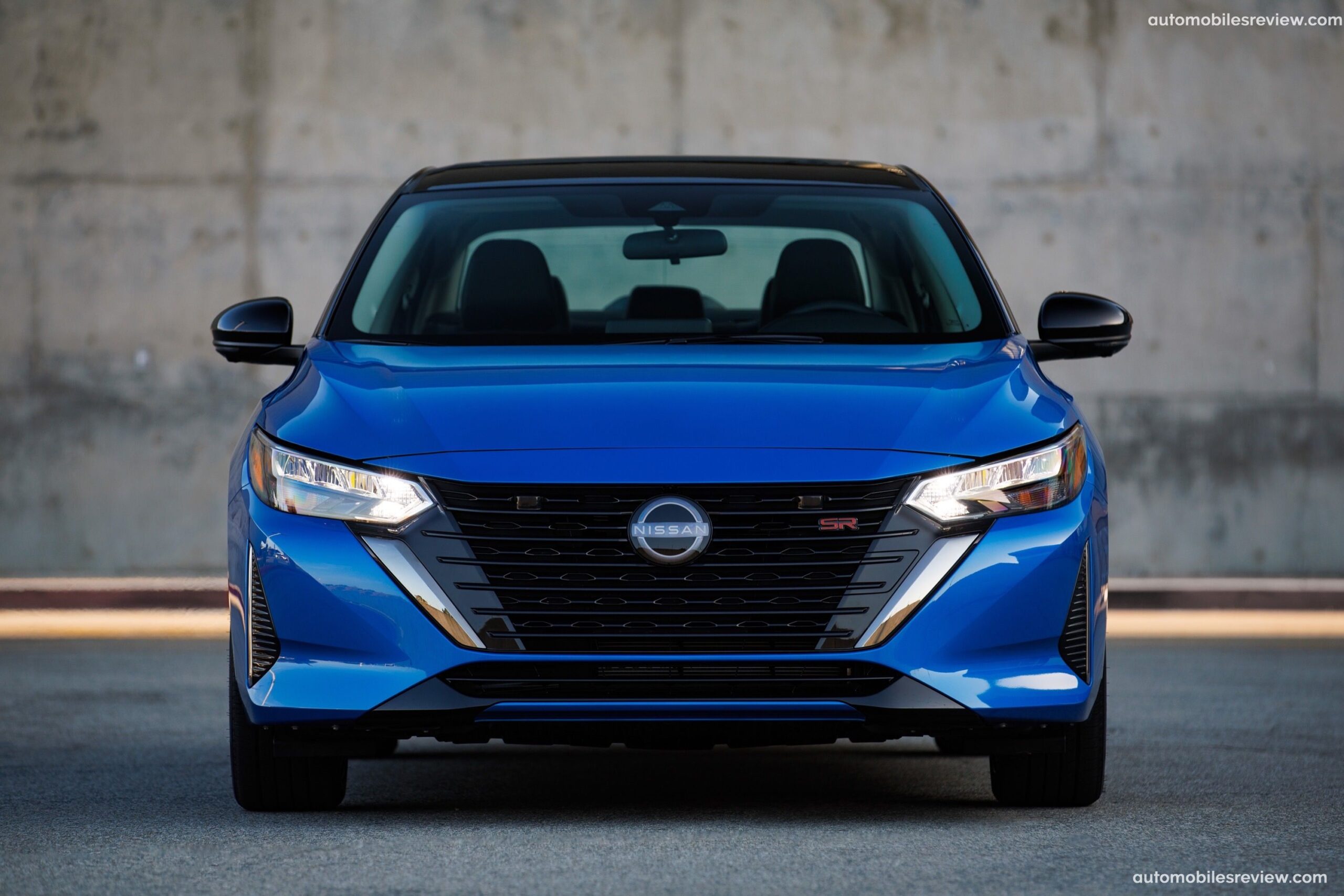
6. **Nissan Sentra**The Nissan Sentra, a long-standing compact sedan, has seen various iterations over the years, and while certain model years may offer reasonable reliability, a specific period stands out as particularly problematic. Owners widely advise staying away from models manufactured between 2013 and 2019, as these years were marred by a series of significant issues that transformed the Sentra into a source of considerable buyer’s remorse. This era of the Sentra has, for many, become synonymous with automotive disappointment.
The most infamous issue plaguing these Sentra models is the continuously variable transmission, or CVT. Nissan heavily relied on this transmission technology across many of its vehicles during this period, and for the Sentra, it proved to be a persistent “thorn in the side” of numerous owners. Complaints regarding the CVT are extensive and varied, highlighting its inherent weaknesses and design flaws. Rather than delivering a smooth, efficient driving experience, it often did the opposite.
Common CVT problems include overheating, which can lead to reduced performance and potential long-term damage. Owners frequently experienced jerky acceleration, where the vehicle would lurch rather than accelerate smoothly, creating an uncomfortable and unpredictable driving dynamic. Another prevalent issue was shuddering, a disconcerting vibration felt through the vehicle, particularly during acceleration or at specific speeds, indicating a struggling or failing transmission component.
Beyond the notorious CVT, the Nissan Sentra also featured a laundry list of other mechanical and safety concerns. Engine stalling was another frustrating problem reported by owners, posing not only an inconvenience but also a significant safety risk, particularly in traffic. The cumulative effect of these performance issues led to a widespread decline in owner confidence and satisfaction, reflecting a significant dip in the vehicle’s overall quality during these years.
Furthermore, this period saw numerous recalls related to critical safety components. Issues with the vehicle’s airbags, seatbelts, brakes, and other systems necessitated various factory fixes, further underscoring the broader reliability concerns. For owners, these recalls meant ongoing trips to dealerships and a constant worry about the safety and integrity of their car. The Nissan Sentra from these model years serves as a prime example of how even a popular model can fall short, leaving its owners wishing they had explored other options.
Car Model Information: 2018 Nissan Sentra S
Name: Nissan Sentra
Caption: 2021 Nissan Sentra SR (B18; Canada)
Manufacturer: Nissan
Aka: Nissan Sunny
Production: 1982–present
Class: Subcompact car
Predecessor: Nissan Sunny#B310
Categories: 1990s cars, 2000s cars, 2010s cars, 2020s cars, All Wikipedia articles written in American English
Summary: The Nissan Sentra is a series of automobiles manufactured by the Japanese automaker Nissan since 1982. Since 1999, the Sentra has been categorized as a compact car, while previously it occupied the subcompact class. Until 2006, Sentra was a rebadged export version of the Japanese Nissan Sunny, but since the 2013 model year, Sentra is a rebadged export version of the Sylphy. The Sentra nameplate is not used in Japan. Many other countries in Latin America sell their versions of the Sunny as the Sentra. In Mexico, the first three generations of the Sentra were known as the Nissan Tsuru (Japanese for crane), and the B13 model was sold under that name until 2017, alongside the updated models badged as Sentra.
In North America, the Sentra currently serves as Nissan’s compact car, despite being rated as a mid-size car by the EPA due to its interior volume since the 2007 model year. While previous Sentras were subcompacts, the Sentra has grown over the years, with the Nissan Versa having replaced the Sentra in the entry-level area.
The Sentra name was created for Nissan by Ira Bachrach of NameLab, and Bachrach describes the origin as “Nissan wanted consumers to understand that it was quite safe even though it was small. The word Sentra sounds like central as well as sentry, which evokes images of safety.”
Get more information about: Nissan Sentra
Buying a high-performing used car >>>
Brand: Nissan Model: Sentra
Price: $10,650 Mileage: 78,361 mi.
Read more about: Consumer Alert: 15 Vehicles Mechanics Say You Must Avoid for Reliable, Worry-Free Driving
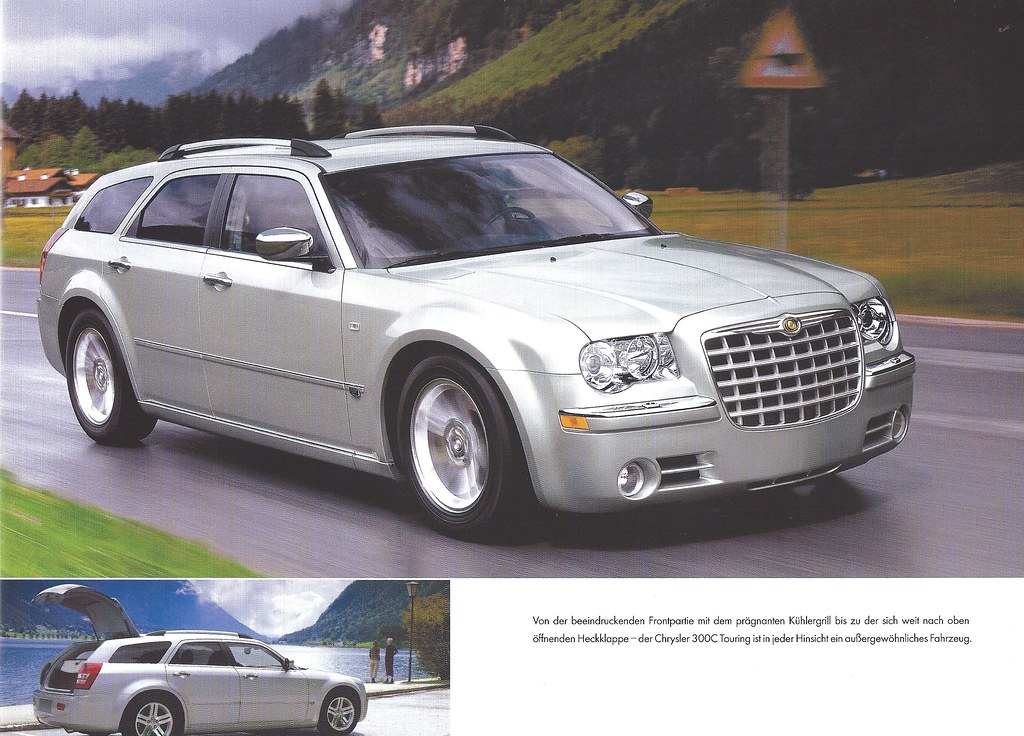
7. **Chrysler 200**The Chrysler 200, produced from 2011 to 2017, was Chrysler’s attempt to offer a competitive mid-size sedan in a challenging market. While it presented an appealing design and features on paper, the real-world ownership experience for many proved to be fraught with reliability issues. These problems were significant enough to consistently place the Chrysler 200 on lists of vehicles that owners frequently regret purchasing, often leading to unexpected costs and considerable frustration.
Among the most persistent and widely reported issues, the 9-speed automatic transmission stood out as a particular source of contention. Owners of the 2015, 2016, and 2017 models found this transmission to be “especially problematic.” Rather than providing seamless shifts and efficient power delivery, it was prone to erratic behavior, including harsh engagements, hesitant responses, and an overall lack of refinement. For a vehicle intended for daily commuting, a temperamental transmission significantly detracts from the driving experience.
These transmission issues were not merely minor annoyances; for many, they were just the beginning of a larger problem, often culminating in complete transmission failure. The prospect of such a major component giving out prematurely is a significant financial burden for any car owner, especially when repair or replacement costs can run into thousands of dollars. This critical defect undermined the car’s perceived value and contributed heavily to buyer’s remorse.
In addition to the transmission woes, the Chrysler 200 also suffered from various engine performance problems. While specific issues could vary by model year and engine option, common complaints pointed to a power plant that was less robust and reliable than expected. These engine-related defects could lead to reduced power, unusual noises, or even complete mechanical failures, requiring extensive and costly repairs. The combination of transmission and engine troubles made the Chrysler 200 a financially precarious choice for many buyers, highlighting the importance of thorough research before committing to a purchase.
Navigating the complex landscape of automotive purchases can be fraught with peril, as many consumers discover too late that their dream car is, in fact, a source of ongoing frustration and unexpected expense. Building on our examination of vehicles that routinely disappoint, we now delve into eight additional models that have consistently left their owners wishing they had chosen a different path. These vehicles, despite their initial appeal or market positioning, reveal systemic issues that undermine reliability, safety, and overall ownership satisfaction, serving as crucial warnings for prospective buyers.
Car Model Information: 2015 Chrysler 200 S
Name: Chrysler 200
Manufacturer: Chrysler
Production: 2010–2016
ModelYears: 2011–2017
Assembly: Sterling Heights, Michigan
Class: Mid-size car
Sp: us
Predecessor: Chrysler Sebring
Categories: 2010s cars, All articles with dead external links, All articles with unsourced statements, Articles with dead external links from July 2020, Articles with permanently dead external links
Summary: The Chrysler 200 is a mid-size sedan that was manufactured and marketed by Chrysler from model years 2011 to 2017 across two generations in four-door sedan and two-door convertible (first generation only) body styles.
The 200 nameplate debuted on the 200C, a prototype hybrid vehicle shown at the 2009 North American International Auto Show in Detroit and based on the Chrysler 300. The 200C concept was engineered to accept either traditional gasoline, hybrid or full-electric powertrains.
Get more information about: Chrysler 200
Buying a high-performing used car >>>
Brand: Chrysler Model: 200
Price: $7,200 Mileage: 122,275 mi.
Read more about: Consumer Alert: 15 Vehicles Mechanics Say You Must Avoid for Reliable, Worry-Free Driving
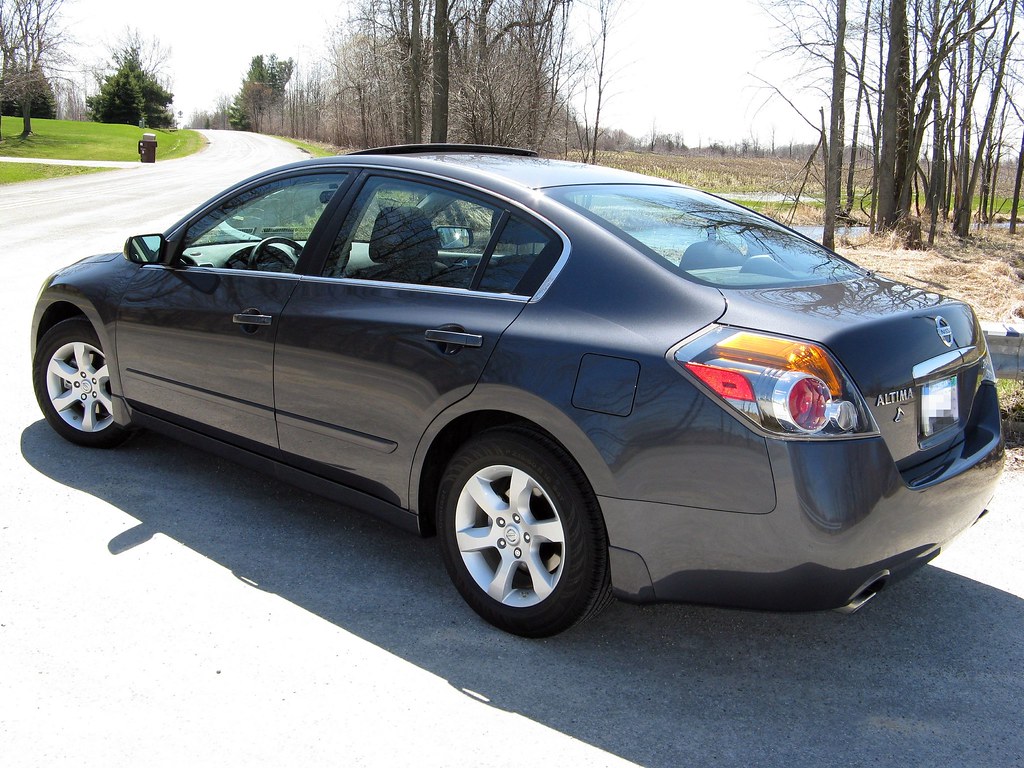
8. **Nissan Altima**Another vehicle that frequently appears on lists of regrettable purchases is the Nissan Altima, particularly models produced between 2013 and 2019. This mid-size sedan, a common sight on roads, became notorious for reliability issues that often overshadowed its practical appeal. For many owners, the experience transformed from a reliable daily driver to a persistent source of mechanical and financial concern.
At the heart of the Altima’s problems during these years was its continuously variable transmission (CVT). This transmission, intended to offer smooth acceleration and improved fuel economy, instead frequently exhibited a range of malfunctions. Owners reported premature wear, shuddering, and even complete transmission failure, necessitating costly replacements that could easily run into thousands of dollars. The unreliable nature of the CVT was not merely an inconvenience; it compromised the vehicle’s driving dynamics and long-term viability.
Beyond the pervasive transmission woes, the Nissan Altima also presented owners with other significant reliability concerns. Steering system issues were frequently reported, affecting the vehicle’s handling precision and potentially compromising safety. Furthermore, many owners experienced excessive oil consumption and oil leaks, indicating deeper engine troubles that required ongoing monitoring and expensive repairs. These combined mechanical shortcomings often led to a significant depreciation of the vehicle’s value and a profound sense of buyer’s remorse.
The accumulation of these issues highlights a critical lesson for car buyers: initial attractiveness or widespread popularity does not always equate to long-term reliability. The Altima’s history during these model years serves as a stark reminder that a thorough investigation of a vehicle’s mechanical track record, especially regarding crucial components like transmissions and engines, is essential before making a purchasing decision.
Car Model Information: 2023 Nissan Altima 2.5 S
Name: Nissan Altima
Caption: 2023 Nissan Altima SR (L34; US)
Manufacturer: Nissan
Aka: Nissan Bluebird
Production: 1992–present
Class: Compact car
Predecessor: Nissan Bluebird,Nissan Stanza
ModelYears: 1993–present
Categories: 2000s cars, 2010s cars, 2020s cars, All-wheel-drive vehicles, All Wikipedia articles written in American English
Summary: The Nissan Altima is a mid-size car manufactured by Nissan since 1992. It is a continuation of the Nissan Bluebird line, which began in 1955.
The Altima has historically been larger, more powerful, and more luxurious than the Nissan Sentra but less so than the Nissan Maxima. The first through fourth-generation cars were manufactured exclusively in the United States and officially sold in North and South America, along with the Middle East and Australia. For other markets, Nissan sold a related mid-size sedan called the Nissan Teana which was between the Altima and Maxima in terms of size. In 2013, the Teana became a rebadged version of the fifth-generation Altima.
The name “Altima” was originally applied to a top trim line of the Nissan Leopard for the Japanese market in 1986, and then to the Nissan Laurel Altima mid-size car sold in Central America and the Caribbean before 1992. In 1992, Nissan discontinued the Stanza which was a Nissan Bluebird clone, replacing it with the US-built Altima, while remaining a compact car. The first Altima was produced in June 1992, as a 1993 model. All Altima models for the North American market were built in Smyrna, Tennessee, until June 2004, when Nissan’s Canton, Mississippi plant also began producing the model to meet high demand.
Get more information about: Nissan Altima
Buying a high-performing used car >>>
Brand: Nissan Model: Altima
Price: $15,412 Mileage: 76,524 mi.
Read more about: 14 Cars That Broke Owners’ Trust: The Models That Left Drivers Stranded and Wishing for a Do-Over
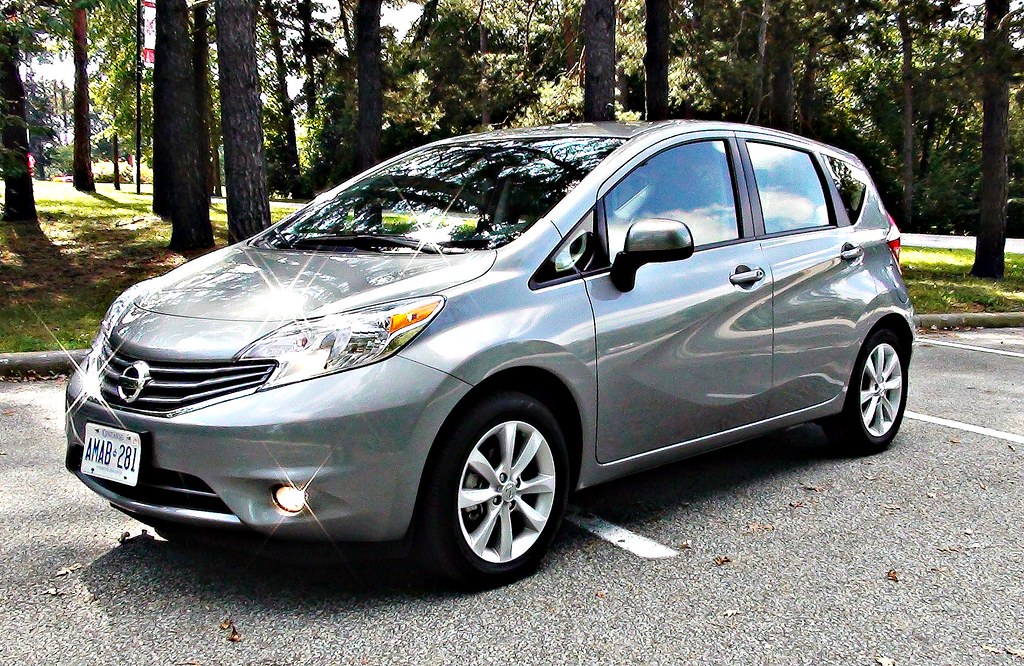
9. **Nissan Versa Note**The Nissan Versa Note, marketed as an accessible and economical small hatchback, often attracted buyers with its low price point. However, as many owners discovered, this affordability frequently came at the expense of quality and a satisfactory ownership experience. For a significant number of drivers, the initial savings were quickly offset by persistent issues that led to considerable regret.
Consistent with other Nissan models of its era, the Versa Note was equipped with a continuously variable transmission (CVT), which became a primary source of frustration for owners. Rather than providing the advertised smooth and efficient operation, the CVT in the Versa Note was prone to premature wear, erratic behavior, and outright failure. These transmission problems resulted in jerky acceleration, compromised drivability, and the daunting prospect of expensive repairs or replacement.
Compounding the transmission issues was the vehicle’s anemic acceleration, stemming from its 1.6-liter 4-cylinder engine. Owners frequently described the power delivery as inadequate, particularly when attempting highway merges or overtaking maneuvers. This lack of responsiveness not only detracted from the driving experience but also raised safety concerns in certain traffic conditions, making the Versa Note feel underpowered and strained in everyday use.
The combination of a problematic transmission and insufficient engine performance painted a clear picture of a vehicle whose low initial cost mirrored its overall quality level. For consumers seeking a truly economical and reliable mode of transport, the Versa Note often proved to be a false economy, requiring more frequent maintenance and offering a less-than-satisfying driving experience than its price tag might initially suggest.
Car Model Information: 2024 Honda Civic Sport
Name: Nissan Note
Manufacturer: Nissan
Production: 2004–present
Class: Mini MPV
BodyStyle: hatchback
Layout: Front-engine, front-wheel-drive layout,Front-engine, four-wheel-drive layout
Predecessor: Nissan Almera Tino
Aka: Nissan Versa
Caption: Nissan Note (E13)
Categories: 2010s cars, 2020s cars, All-wheel-drive vehicles, All articles containing potentially dated statements, All articles needing rewrite
Summary: The Nissan Note (Japanese: 日産・ノート, Hepburn: Nissan Nōto) is a supermini/subcompact hatchback or a mini MPV manufactured and marketed globally by Nissan. Introduced in 2004, the first-generation Note was primarily marketed in Japan and Europe, and was produced in Japan and the United Kingdom. The second-generation model was sold in other regions, including North America where it was manufactured in Mexico and marketed as the Versa Note, and Thailand, where it serves as one of the B-segment hatchback offered by the brand alongside the smaller March/Micra under the Eco Car tax scheme.
In 2017, the second-generation Note was replaced by the French-built K14 Micra for the European market. The Versa Note was discontinued in North America in 2019 due to the decreasing demand for subcompact hatchbacks in the region. It continued to be produced and sold in Japan up to the introduction of the third-generation Note in late 2020.
The Note was introduced with a series hybrid drivetrain in late 2016 as the Note e-Power. Due to its popularity and the push of electrification, the third-generation Note is only available with the e-Power drivetrain, with a WLTC fuel economy of 29.5 kilometres per litre (69 mpg‑US).
Get more information about: Nissan Note
Buying a high-performing used car >>>
Brand: Nissan Model: Versa Note
Price: $25,950 Mileage: 29,727 mi.
Read more about: Consumer Alert: 15 Vehicles Mechanics Say You Must Avoid for Reliable, Worry-Free Driving
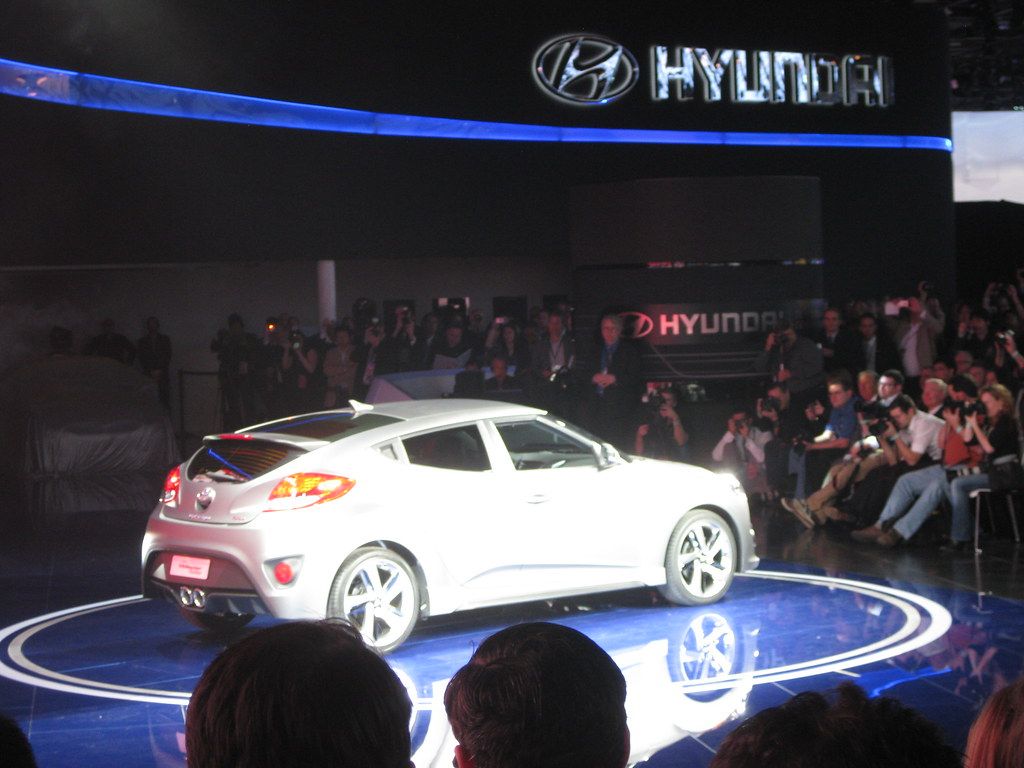
10. **Hyundai Veloster**The Hyundai Veloster captivated many buyers with its distinctive three-door styling and promise of responsive handling, offering a unique proposition in the compact car segment. While its cool appearance and nimble characteristics initially drew praise, a deeper look into owner experiences reveals a series of significant problems that were, for many, hard to overlook, leading to widespread disappointment.
Foremost among the Veloster’s drawbacks were pervasive engine issues, which could, in some cases, lead to catastrophic failure. Owners reported a range of problems from unexpected power loss to more severe internal engine defects that required extensive and costly repairs. These engine troubles not only undermined the vehicle’s reliability but also presented serious safety concerns, transforming the thrill of ownership into a source of anxiety.
Adding to the mechanical frustrations, the Veloster’s dual-clutch transmission also suffered from notable performance deficiencies. Owners frequently experienced delayed acceleration, where the vehicle would hesitate to respond to throttle input, as well as noticeable slipping and jerky shifts. These transmission flaws directly impacted the driving experience, making it less smooth and predictable than expected, particularly in stop-and-go traffic.
As if the powertrain issues weren’t enough, the Hyundai Veloster also exhibited problems with its suspension and steering systems. These issues could lead to a less refined ride, premature wear on components, and compromised handling precision, further detracting from the vehicle’s sporty aspirations. For buyers drawn in by its unique design and spirited marketing, the reality of these compounding mechanical problems often resulted in profound buyer’s remorse.
Car Model Information: 2019 Hyundai Veloster 2
Name: Hyundai Veloster
Manufacturer: Hyundai Motor Company
Production: 2011–2022
Class: Sport compact car
Layout: Front-engine, front-wheel-drive layout
BodyStyle: hatchback
Predecessor: Hyundai Tiburon
ModelYears: 2012–2022
Assembly: Ulsan
Categories: All Wikipedia articles in need of updating, All articles with unsourced statements, Articles containing Korean-language text, Articles with short description, Articles with unsourced statements from May 2018
Summary: The Hyundai Veloster (Korean: 현대 벨로스터, romanized: Hyeondae Belloseuteo) is a compact car first produced in 2011 by Hyundai, with sales beginning in South Korea on March 10, 2011, and in Canada and the United States since the fall of 2011. In South Korea, it was marketed under Hyundai’s ‘Premium Youth Lab’. It was unveiled on January 10, 2011, at the Detroit Auto Show, and fills the void left when Hyundai discontinued the Hyundai Tiburon after the 2008 model year.
The car differs from most other hatchbacks with its asymmetrical door configuration, featuring one large door on the driver side and two smaller doors on the passenger side. This configuration is more common on commercial vehicles and minivans.
Get more information about: Hyundai Veloster
Buying a high-performing used car >>>
Brand: Hyundai Model: Veloster
Price: $15,311 Mileage: 48,944 mi.
Read more about: Beyond the Showroom Shine: 11 Popular Cars Their Owners Deeply Regret Buying
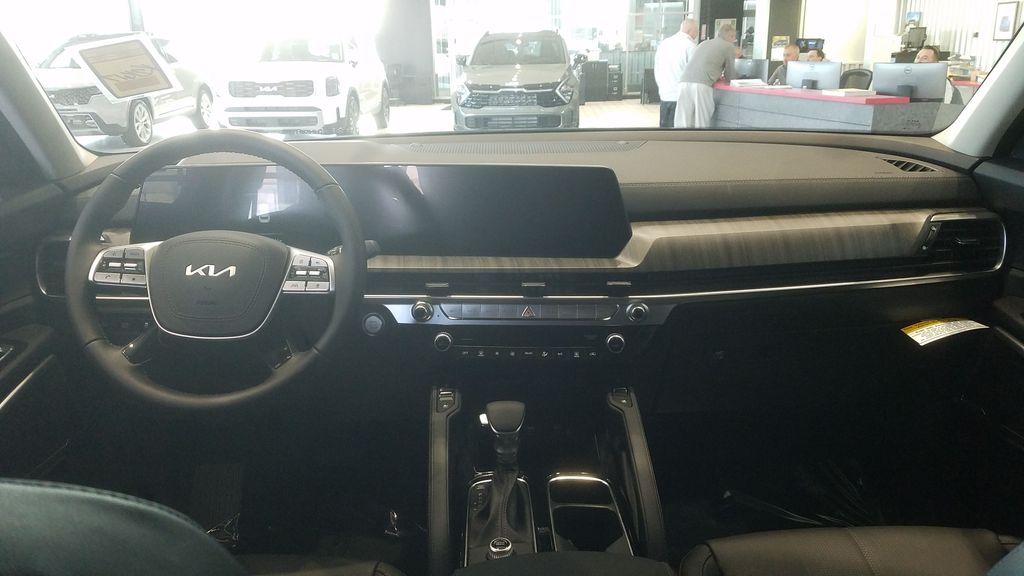
11. **Kia Rio**Owners of the Kia Rio have also frequently expressed significant buyer’s remorse, despite the vehicle’s reputation for affordability and fuel efficiency. While these attributes initially made the Rio an attractive option for budget-conscious consumers, its operational reality often diverged sharply from expectations due to persistent mechanical and quality issues that compromised its long-term value.
A primary concern for Rio owners centered on recurrent engine issues. These problems frequently manifested as rough idling and misfires, symptoms often traced back to faulty spark plugs or ignition coils. Such engine irregularities not only affected the vehicle’s performance and fuel economy but also foreshadowed more significant and costly repairs if left unaddressed, creating a continuous cycle of maintenance and concern for owners.
Beyond the engine compartment, the Kia Rio also drew criticism for its interior quality and overall comfort. Owners commonly complained about cheap interior materials that showed wear prematurely and a general lack of refinement that detracted from the daily driving experience. Comfort issues, particularly on longer journeys, further contributed to owner dissatisfaction, making the vehicle less appealing as a primary mode of transportation.
The accumulation of these issues—engine reliability concerns, unrefined interior quality, and comfort drawbacks—ultimately led many Rio owners to question their initial purchasing decision. For a vehicle marketed on its practicality and economic benefits, the recurrent problems often transformed it into a financial and functional disappointment, illustrating that a low sticker price does not always equate to good value over time.
Car Model Information: 2023 Kia Rio S
Name: Kia Rio
Caption: Fourth generation Kia Rio
Manufacturer: Kia
Aka: Kia Pride (2005–2017),Kia K2 (China; 2011–2020)
Production: November 1999 – December 2023
ModelYears: 2001–2023 (North America)
BodyStyle: hatchback
Class: Subcompact car
Layout: Front-engine, front-wheel-drive layout
Predecessor: Kia Pride,Kia Avella
Successor: Kia K3 (BL7)
Categories: 2000s cars, 2010s cars, Articles containing Korean-language text, Articles with short description, CS1 Croatian-language sources (hr)
Summary: The Kia Rio (Korean: 기아 리오) is a subcompact car manufactured by Kia from 1999 to 2023. Body styles have included a three and five-door hatchback and four-door sedan, equipped with inline-four gasoline and diesel engines, and front-wheel drive.
The Rio replaced the first generation Pride—a rebadged version of the Ford Festiva—and the Avella, a subcompact sold as a Ford in some markets. A second generation was introduced in 2005 in Europe and in 2006 in North America, sharing its platform with the Hyundai Accent, a subcompact manufactured by its sister Hyundai Motor Company in South Korea.
In August 2023, the K3 was introduced as its successor in several markets such as Mexico and the GCC countries.
Get more information about: Kia Rio
Buying a high-performing used car >>>
Brand: Kia Model: Rio
Price: $18,491 Mileage: 22,509 mi.
Read more about: Pure Automotive Gold: 14 Masterpiece Cars from the 1960s That Still Reign Supreme
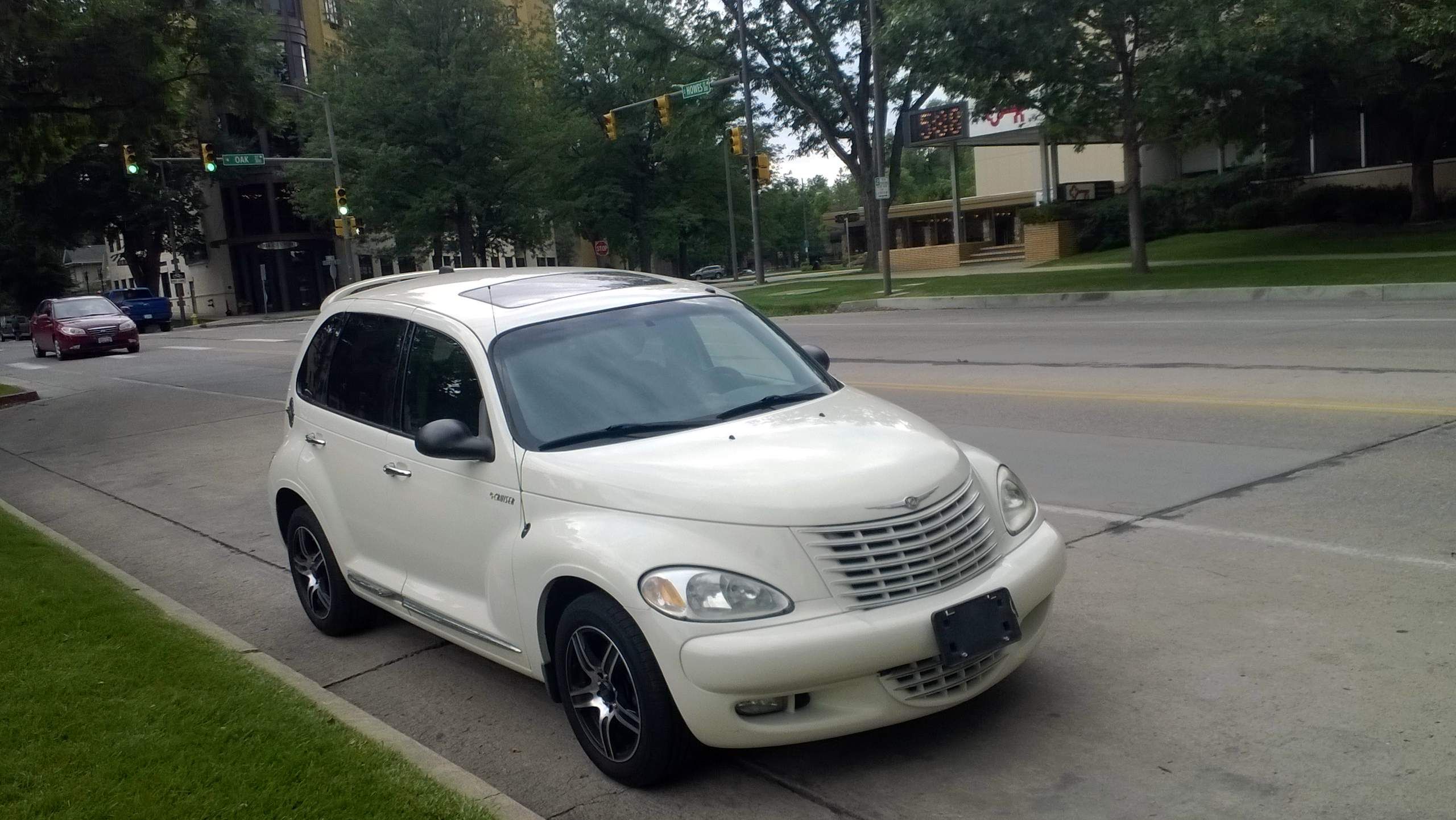
12. **Chrysler PT Cruiser**The Chrysler PT Cruiser, a compact car renowned for its polarizing retro-inspired styling, often evoked strong opinions, with many either loving or loathing its unique aesthetic. However, as owners soon discovered, the vehicle’s looks were far from its only contentious aspect. Beneath its distinctive exterior lay a multitude of mechanical and electrical problems that consistently led to deep regret for those who purchased it.
The PT Cruiser was plagued by an extensive array of engine issues. These problems ranged from common complaints of stalling and rough idling to more severe concerns like overheating and catastrophic head gasket failure. The need for frequent and often expensive engine repairs became a recurring nightmare for many owners, severely impacting the vehicle’s reliability and their confidence in its long-term viability.
Adding to the powertrain concerns, the PT Cruiser also suffered from persistent transmission problems. Owners reported erratic shifting, premature wear, and even complete transmission failures, which are among the most costly repairs a vehicle can require. Such widespread transmission defects significantly hindered the car’s drivability and added another layer of financial burden to an already problematic ownership experience.
Furthermore, electrical system gremlins were a common complaint, manifesting in various frustrating ways from malfunctioning gauges and sensors to more critical system failures. The combination of widespread engine, transmission, and electrical issues made the Chrysler PT Cruiser a comprehensive source of owner dissatisfaction, causing many to regret their buying decision and highlighting the importance of looking beyond superficial styling when purchasing a vehicle.
Car Model Information: 2024 Honda Civic Sport
Name: Chrysler PT Cruiser
Manufacturer: Chrysler
ModelCode: PT,PG
Production: 2000–2010
ModelYears: 2001–2010
Assembly: Toluca
Designer: Bryan Nesbitt
Class: Compact car
BodyStyle: convertible
Platform: Chrysler PT platform
Related: Dodge Neon
Predecessor: Dodge Neon
Successor: Lancia Delta#Third generation
Layout: Front-engine, front-wheel-drive layout
Engine: ubl
Transmission: Ultradrive#40TE
Wheelbase: 103 in
Abbr: on
Length: 168.8 in
Width: 67.1 in
Height: 63 in
Weight: 3123 lb
Categories: 2010s cars, All articles with unsourced statements, Articles with short description, Articles with unsourced statements from March 2018, Cars discontinued in 2010
Summary: The Chrysler PT Cruiser is a compact car that was built by the American company Chrysler from 2001 until 2010. Introduced as a five-door hatchback wagon, a two-door convertible variant was also made from 2005 until 2008.
Originally planned as a Plymouth model, the PT Cruiser was ultimately marketed as a Chrysler when Plymouth was discontinued. Intended to invoke 1930s aesthetics, the exterior of the PT Cruiser was designed by Bryan Nesbitt. The model received an intermediate facelift for the 2006 model year. Interior packaging was noted for its high roof, high h-point seating, and flexible cargo and passenger configurations enabled by a multi-level rear cargo shelf and rear seats a user could fold, tumble, or remove.
The PT Cruiser was produced in Mexico and Austria at the Toluca Car Assembly and Eurostar Automobilwerk factories respectively. By the end of production in July 2010, worldwide production had reached 1.35 million.
In its nameplate, PT stands for “Personal Transport” or “Personal Transportation”. PT was the PT Cruiser’s product code for the Mexican-made units.
Get more information about: Chrysler PT Cruiser
Buying a high-performing used car >>>
Brand: Chrysler Model: PT Cruiser
Price: $25,950 Mileage: 29,727 mi.
Read more about: 14 Cars That Broke Owners’ Trust: The Models That Left Drivers Stranded and Wishing for a Do-Over
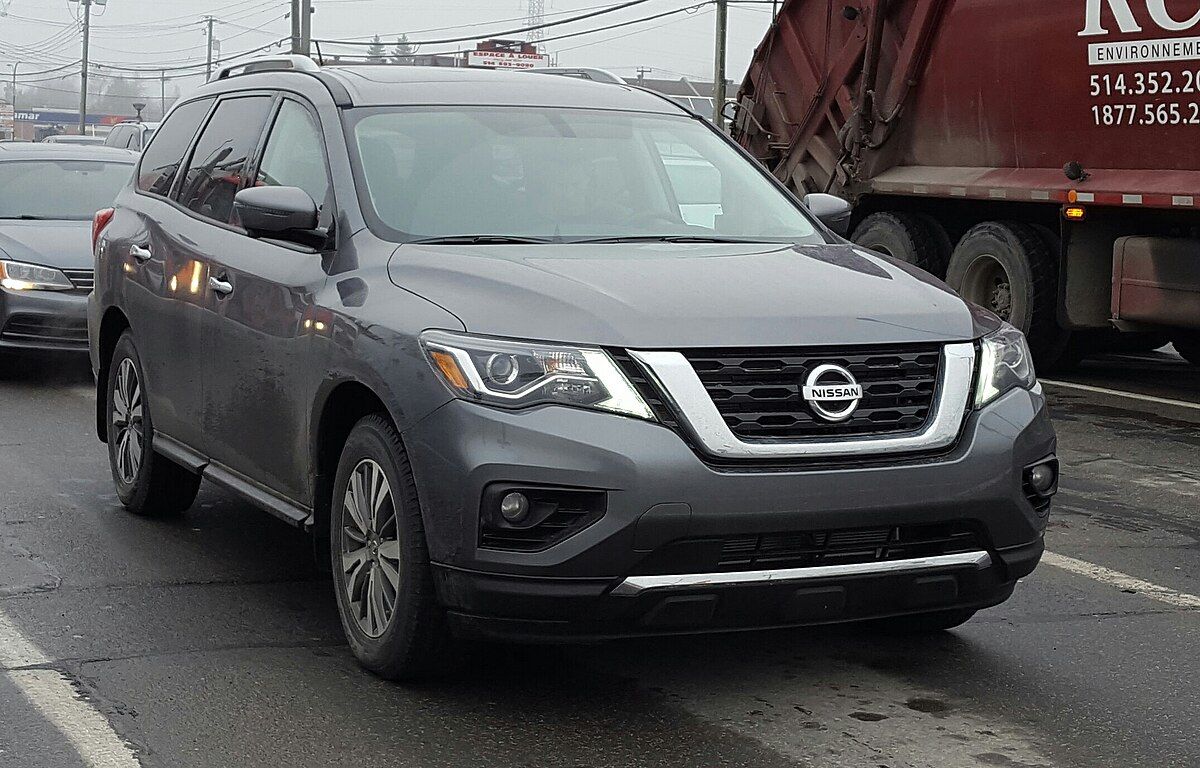
13. **Nissan Pathfinder**Despite its popularity as an SUV, the Nissan Pathfinder has a history of problems that have frequently left owners with significant buyer’s remorse. For a vehicle designed to be a dependable family hauler and adventure companion, its real-world reliability often fell short, particularly in key mechanical areas that are crucial for owner confidence and long-term satisfaction.
Central to the Pathfinder’s issues, especially during certain model years, was the continuously variable transmission (CVT). This transmission technology, while intended to provide a seamless driving experience, was a common point of contention for many owners. Reports included rough shifting, pronounced shuddering during acceleration, and overheating issues that could severely impact performance and lead to premature failure. The necessity of replacing the entire transmission was a particularly bitter pill for some owners, representing a substantial, unexpected cost.
Beyond the problematic CVT, the Nissan Pathfinder also experienced various engine issues, further contributing to owner frustration. These engine-related defects could lead to reduced power, unusual noises, or even complete breakdowns, demanding expensive and time-consuming repairs. Moreover, fuel system problems were another source of recurring complaints, affecting the vehicle’s efficiency and reliability and adding to the overall maintenance burden.
The cumulative effect of these transmission, engine, and fuel system issues transformed the ownership experience of many Nissan Pathfinder models from one of dependable utility to one marred by frequent repairs and financial strain. For an SUV that promises rugged capability and family comfort, these systemic flaws highlight the disconnect between marketing appeal and practical, long-term reliability.
Car Model Information: 2023 Nissan Pathfinder SL
Name: Nissan Pathfinder
Caption: 2022 Nissan Pathfinder Platinum 4WD (R53, US)
Manufacturer: Nissan
Production: 1985–present
ModelYears: unbulleted list
Layout: unbulleted list
Class: unbulleted list
Chassis: unbulleted list
Predecessor: unbulleted list
Successor: unbulleted list
Categories: 1990s cars, 2000s cars, 2010s cars, 2020s cars, All-wheel-drive vehicles
Summary: The Nissan Pathfinder is a range of sport utility vehicles manufactured by Nissan since 1985. Until the third-generation model, the Pathfinder is based on Nissan’s compact pickup truck platform which it shares with the Navara/Frontier.
The Pathfinder was marketed as the Nissan Terrano (Japanese: 日産・テラノ, Hepburn: Nissan Terano) outside North America. Beginning in 2004, the vehicles were marketed globally as the Pathfinder.
In 2012, the R52 series Pathfinder was released as a three-row crossover SUV based on the unibody Nissan D platform, moving away from the body-on-frame chassis format. The role of a mid-size body-on-frame SUV in Nissan’s global lineup was passed to the Terra/X-Terra, which was released in 2018 and based on the D23 series Navara.
Get more information about: Nissan Pathfinder
Buying a high-performing used car >>>
Brand: Nissan Model: Pathfinder
Price: $32,775 Mileage: 18,055 mi.
Read more about: Consumer Alert: 15 Vehicles Mechanics Say You Must Avoid for Reliable, Worry-Free Driving
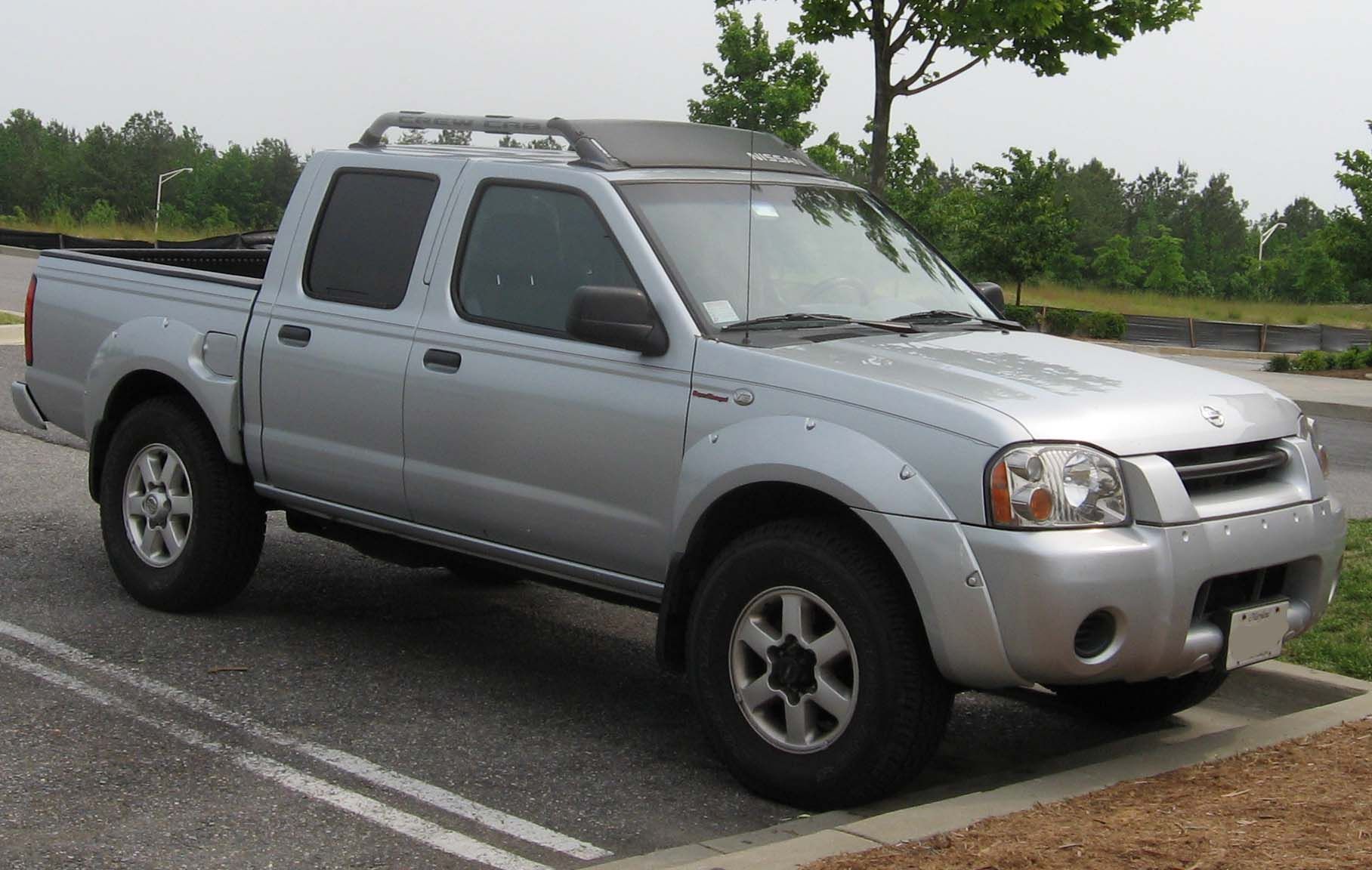
14. **Nissan Frontier**As a mid-size pickup truck, the Nissan Frontier is expected to deliver rugged durability and dependable performance. However, for many owners, particularly those who purchased models from 2005 to 2010, the Frontier became a profound source of frustration, leading to significant head-shaking and dashboard-pounding over its pervasive mechanical problems. This era of the Frontier is especially notorious for its severe and costly reliability issues.
The most infamous problem plaguing these specific model years centered on severe transmission issues, directly linked to a design flaw where the radiator was prone to leaking coolant into the transmission. This cross-contamination had catastrophic consequences, leading to a rapid degradation of the transmission’s internal components. Owners reported a range of symptoms including slipping gears, jarring and herky-jerky shifting, and ultimately, complete transmission failure.
Such a fundamental flaw in a critical powertrain component not only resulted in immense inconvenience but also significant financial burdens for owners, who were often faced with the prospect of expensive transmission replacements. The integrity of a truck, particularly one relied upon for work or heavy duty tasks, is paramount, and these transmission failures severely undermined the Frontier’s reputation and utility.
Compounding these transmission woes, the Nissan Frontier also suffered from various engine and timing chain issues. These problems further eroded owner confidence, leading to additional repair costs and downtime. For a segment where reliability and robust performance are non-negotiable, the Nissan Frontier from these model years stands as a powerful cautionary tale, illustrating how design defects can profoundly impact owner satisfaction and long-term value.
Car Model Information: 2024 Nissan Frontier SV
Categories: All set index articles, Articles with short description, Nissan vehicles, Set index articles on cars, Short description is different from Wikidata
Summary: The Nissan Frontier is a nameplate used on three different pickup truck models by Nissan:
Nissan Frontier (international), an alternative nameplate for the NP300/Navara on some markets
Nissan Frontier (North America), a rebadged NP300/Navara from 1997 to 2021, then became a separate model since 2021
Nissan Frontier Pro, a rebadged Dongfeng Z9 PHEV that will be available from 2025.
Get more information about: Nissan Frontier
Buying a high-performing used car >>>
Brand: Nissan Model: Frontier
Price: $27,992 Mileage: 5,936 mi.
Read more about: 14 Cars That Broke Owners’ Trust: The Models That Left Drivers Stranded and Wishing for a Do-Over
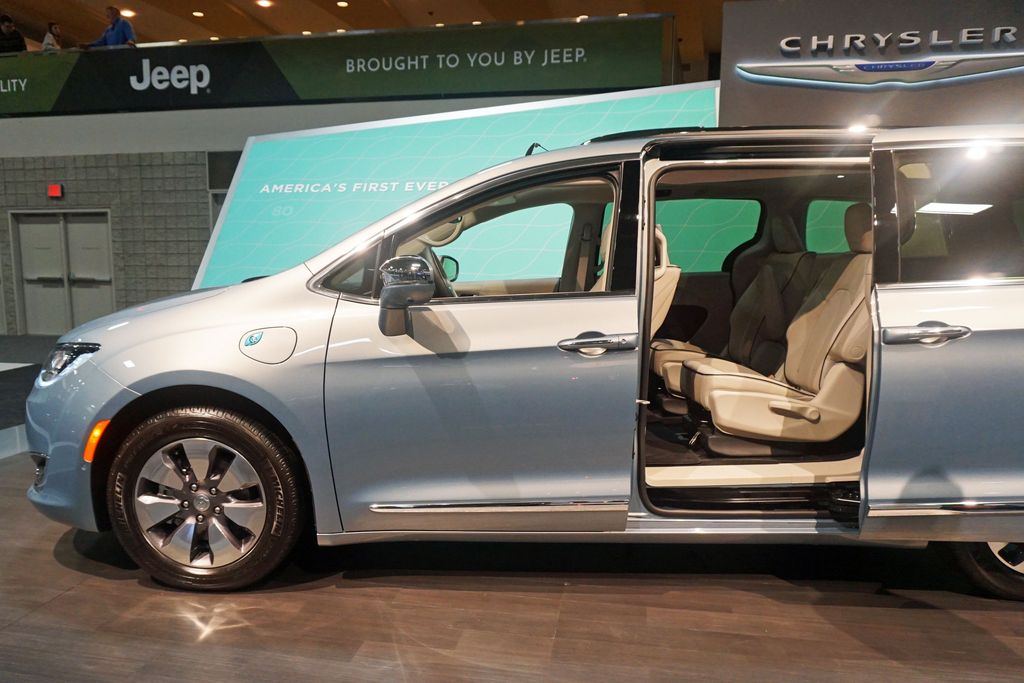
15. **Chrysler Pacifica Hybrid**The Chrysler Pacifica Hybrid entered the market as a popular minivan, offering an appealing blend of family-friendly practicality with the promise of enhanced fuel efficiency through its plug-in hybrid powertrain. However, for many owners, the innovative technology brought with it a new set of problems, raising the critical question of whether the fuel savings were enough to offset the persistent battery and electrical issues. According to numerous owners, the answer was a resounding “no.”
At the core of the Pacifica Hybrid’s owner dissatisfaction were significant problems related to its battery and electrical systems. Issues frequently reported included unexpected battery drain, which could leave owners stranded, and an inconsistent all-electric range that often failed to meet expectations or advertised figures. More critically, instances of complete battery failure were not uncommon, resulting in extremely costly repairs for a central component of the hybrid system.
Further complicating the ownership experience, the electric continuous variable transmission (eCVT) also presented its own set of challenges. While integral to the hybrid powertrain, this transmission sometimes exhibited erratic behavior or reliability concerns, detracting from the smooth, efficient driving experience that hybrid vehicles are supposed to offer. These transmission-related issues, coupled with the battery problems, created a complex web of mechanical unreliability.
For families who invested in the Pacifica Hybrid seeking both space and fuel economy, the ongoing battery, electrical, and transmission problems often turned the vehicle into a source of stress and unexpected expenses. The allure of its advanced powertrain often faded in the face of its practical shortcomings, underscoring the importance of thoroughly vetting the long-term reliability of new technologies before committing to a purchase. The list of problems for this minivan, as many owners discovered, unfortunately “goes on.”
Car Model Information: 2024 Honda Civic Sport
Name: Chrysler Pacifica (RU)
Manufacturer: Chrysler (automotive brand)
Aka: Chrysler Voyager,Chrysler Grand Caravan (Canada, 2021–present)
Production: 2016–present
ModelYears: 2017–present
Assembly: Windsor, Ontario
Designer: Irina Zavatski,Winnie Cheung (interior)
Class: Minivan
BodyStyle: 5-door minivan
Layout: Front-engine, front-wheel drive,Front-engine, all-wheel drive
Platform: Compact U.S. Wide platform
Related: Chrysler 200#Second generation (2014–)
Engine: Chrysler Pentastar engine#3.6L,FCA Global Medium Engine
Motor: 2x electric motors (SiEVT main motor & motor generator; PHEV)
Transmission: ZF 9HP transmission,automatic transmission,Continuously variable transmission
Drivetrain: PHEV
ElectricRange: cvt
Battery: val,lithium-ion battery
Wheelbase: 3089 mm
Abbr: on
Order: flip (hybrid)
Length: 203.6 in
Width: 79.6 in
Height: convert
Weight: {{convert,1964,kg,lb,abbr=on,order=flip
Predecessor: Chrysler minivans (RT)
Categories: 2010s cars, All-wheel-drive vehicles, Articles with short description, CS1 Spanish-language sources (es), Cars introduced in 2016
Summary: The Chrysler Pacifica is a minivan produced by the Chrysler division of Stellantis since the 2017 model year. Replacing the Chrysler Town & Country, the Pacifica is the sixth generation of Chrysler minivans, taking its name from the 2004–2008 product line. Along with serving as the first minivan with a plug-in hybrid drivetrain, the Pacifica has also served as a platform for autonomous vehicle development.
For the 2020 model year, Chrysler repackaged the lower-trim versions of the Pacifica as a revived Chrysler Voyager, largely to expand fleet sales of the model line; following the retirement of the Dodge Grand Caravan, the Chrysler Voyager was introduced in Canada for 2021 as the Chrysler Grand Caravan (moving the nameplate from Dodge to Chrysler after 36 years). Following the retirement of the Chrysler 300 sedan, the Pacifica/Voyager/Grand Caravan is currently the only vehicle marketed by Chrysler.
Chrysler has assembled the Pacifica minivan (and the Voyager/Grand Caravan) in its Windsor Assembly facility in Ontario (home to Chrysler minivan assembly since 1983).
Get more information about: Chrysler Pacifica (minivan)
Buying a high-performing used car >>>
Brand: Chrysler Model: Pacifica Hybrid
Price: $25,950 Mileage: 29,727 mi.
Read more about: Consumer Alert: 15 Vehicles Mechanics Say You Must Avoid for Reliable, Worry-Free Driving
The journey of car ownership is not always a smooth ride, and as our comprehensive review of these 15 vehicles demonstrates, the road to regret is often paved with good intentions and flashy marketing. From persistent transmission failures and debilitating engine problems to electrical system gremlins and unforeseen repair costs, these models serve as clear examples of how initial appeal can quickly give way to profound disappointment. Learning from the collective experiences of thousands of owners, supported by rigorous data from Consumer Reports and industry recalls, is an invaluable tool in making truly informed decisions. Before you sign on the dotted line, remember that the true cost of a vehicle extends far beyond its sticker price, encompassing long-term reliability, maintenance demands, and crucially, your peace of mind. Let these insights guide you toward a purchase that brings lasting satisfaction, not regret, ensuring your hard-earned money is invested in a vehicle that genuinely lives up to its promise.


